
Lusaka National Park: Zambia's Hidden Gem
Discover Lusaka National Park: A serene escape near Zambia's capital, offering wildlife sightings, scenic landscapes, and a commitment to conservation.
Nestled on the outskirts of Zambia's bustling capital city, Lusaka National Park is an oasis of natural beauty and wildlife. Officially opened in 2015, this park is one of Zambia's newest national parks, offering visitors a unique blend of scenic landscapes, diverse flora, and exciting wildlife encounters. The park spans over 46 square kilometers and is a haven for nature lovers and outdoor enthusiasts alike. As you explore Lusaka National Park, you will find a variety of animals roaming freely, including zebras, giraffes, and several species of antelope. Birdwatchers will also delight in the numerous bird species that call the park home. The park's well-maintained trails and picnic spots provide the perfect setting for a leisurely day out with family or friends. Whether you're keen on a guided safari or prefer to explore on your own, Lusaka National Park offers a peaceful retreat from the city's hustle and bustle. One of the park's highlights is its commitment to conservation and education. Visitors can learn about the park's efforts to protect and preserve Zambia's natural heritage through informative displays and guided tours. With its close proximity to Lusaka, the park is easily accessible, making it an ideal day trip for tourists looking to experience Zambia's wildlife and natural beauty without venturing too far from the city.
Local tips in Lusaka National Park
- Visit early in the morning or late afternoon for the best chances of spotting wildlife.
- Bring binoculars and a camera to capture the diverse bird species and stunning landscapes.
- Pack a picnic and enjoy the designated picnic areas within the park.
- Wear comfortable walking shoes and bring plenty of water, especially during the hot season.
- Check for any guided tours or educational programs that may be available during your visit.
Lusaka National Park: Zambia's Hidden Gem
Nestled on the outskirts of Zambia's bustling capital city, Lusaka National Park is an oasis of natural beauty and wildlife. Officially opened in 2015, this park is one of Zambia's newest national parks, offering visitors a unique blend of scenic landscapes, diverse flora, and exciting wildlife encounters. The park spans over 46 square kilometers and is a haven for nature lovers and outdoor enthusiasts alike. As you explore Lusaka National Park, you will find a variety of animals roaming freely, including zebras, giraffes, and several species of antelope. Birdwatchers will also delight in the numerous bird species that call the park home. The park's well-maintained trails and picnic spots provide the perfect setting for a leisurely day out with family or friends. Whether you're keen on a guided safari or prefer to explore on your own, Lusaka National Park offers a peaceful retreat from the city's hustle and bustle. One of the park's highlights is its commitment to conservation and education. Visitors can learn about the park's efforts to protect and preserve Zambia's natural heritage through informative displays and guided tours. With its close proximity to Lusaka, the park is easily accessible, making it an ideal day trip for tourists looking to experience Zambia's wildlife and natural beauty without venturing too far from the city.
When is the best time to go to Lusaka National Park?
Iconic landmarks you can’t miss
Levy Junction Shopping Mall
Discover the vibrant shopping experience at Levy Junction Shopping Mall in Lusaka, where local culture meets international retail in a lively atmosphere.
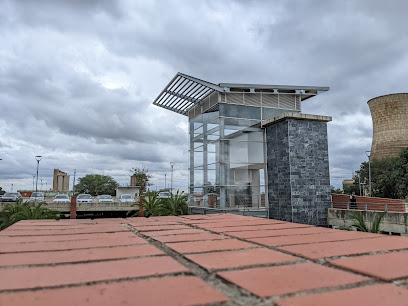
Manda Hill Shopping Mall
Explore the vibrant shopping, dining, and entertainment experiences at Manda Hill Shopping Mall, Lusaka's premier retail destination.
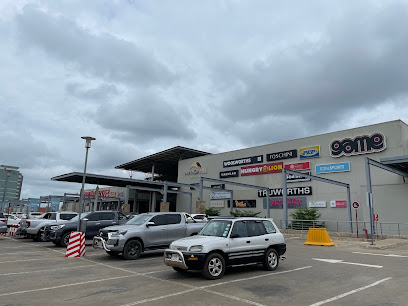
Arcades Shopping Mall
Explore Arcades Shopping Mall in Lusaka for a mix of shopping, dining, and entertainment, capturing the vibrant spirit of Zambian culture.
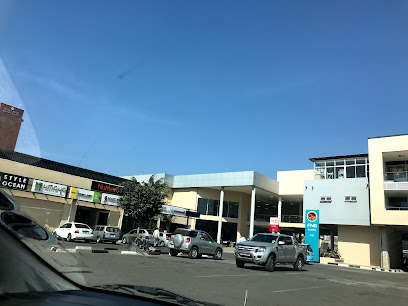
Society Business Park
Experience the pulse of Lusaka at Society Business Park - a premier shopping mall offering diverse retail, dining, and entertainment options.
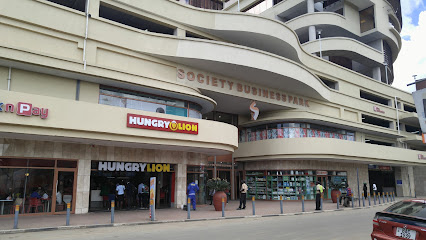
Woodlands Stadium
Experience the vibrant atmosphere of Woodlands Stadium in Lusaka, where sport and community come together in a thrilling environment.

Lewanika Mall
Explore Lewanika Mall in Lusaka for a unique blend of shopping, dining, and entertainment that captures the essence of modern Zambian culture.
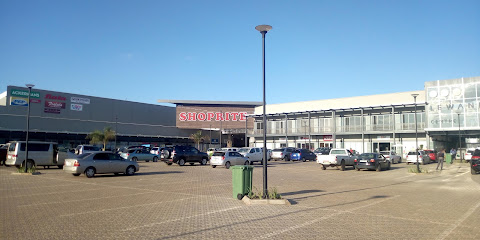
Novare Great North Mall
Discover shopping, dining, and entertainment at Novare Great North Mall - a vibrant destination in Lusaka, Zambia, perfect for tourists and locals alike.

Soweto Market
Discover the vibrant culture and local flavors of Lusaka at Soweto Market, a bustling marketplace filled with unique crafts and delicious Zambian cuisine.
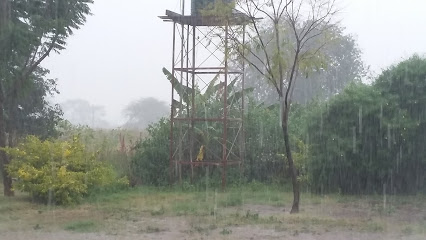
Hilton Garden Inn Lusaka Society Business Park
Discover the perfect blend of comfort and modern amenities at Hilton Garden Inn Lusaka Society Business Park, your ideal base in Zambia's vibrant capital.
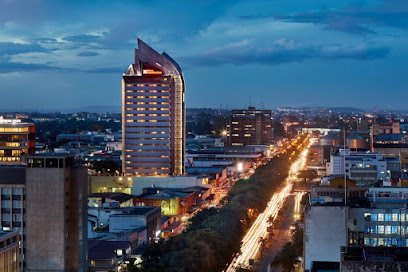
Longacres Mall
Explore Longacres Mall in Lusaka for a vibrant shopping experience, diverse dining options, and a taste of local culture, perfect for every tourist.
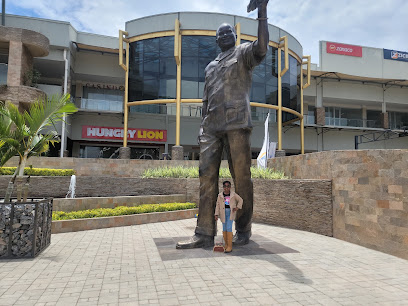
Munda Wanga Environmental Park
Explore Munda Wanga Environmental Park in Chilanga, Zambia – a serene haven for wildlife, conservation, and family-friendly activities amidst stunning natural beauty.
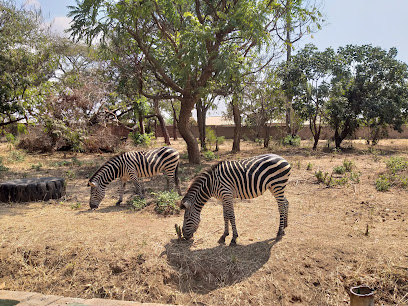
Twin Palms Mall
Explore the dynamic shopping, dining, and entertainment experiences at Twin Palms Mall in Lusaka, the heart of Zambian commerce.
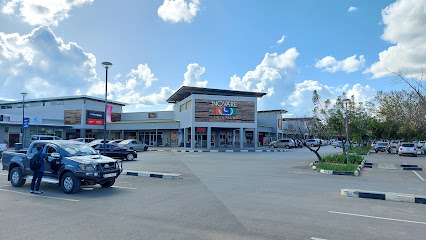
Ciêla, Lusaka, a Tribute Portfolio Resort and Spa
Experience the blend of luxury and tranquility at Ciêla, Lusaka, a premier resort hotel featuring a world-class spa and exquisite dining.
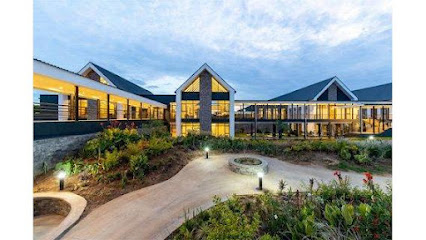
Official Kabwata Cultural Village Page
Discover the vibrant art and culture of Zambia at Kabwata Cultural Village, an immersive cultural experience in Lusaka.
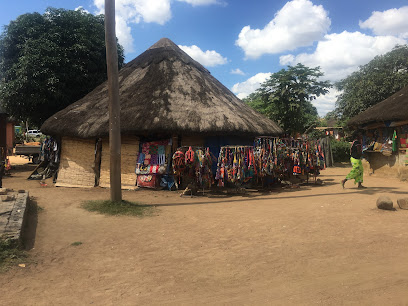
Kalimba Reptile Park
Experience the captivating world of reptiles and wildlife at Kalimba Reptile Park, a wildlife refuge and tourist attraction in Lusaka, Zambia.

Unmissable attractions to see
The Cross park
Experience the beauty and tranquility of Lusaka at The Cross Park, your perfect getaway for relaxation and outdoor activities.
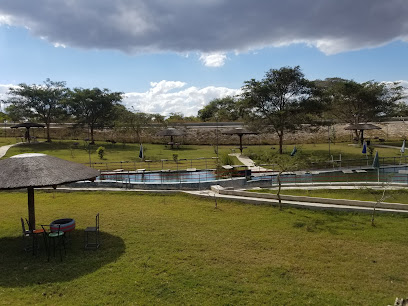
Parays Animal Sanctuary
Explore the enchanting Parays Animal Sanctuary in Lusaka, Zambia, where wildlife, nature trails, and family fun come together in a harmonious adventure.
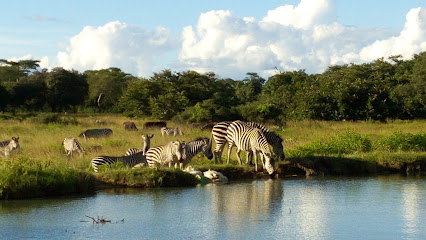
IBIZA GARDENS
Explore the tranquility of Ibiza Gardens in Lusaka, a lush oasis perfect for nature lovers and families seeking relaxation and beauty.
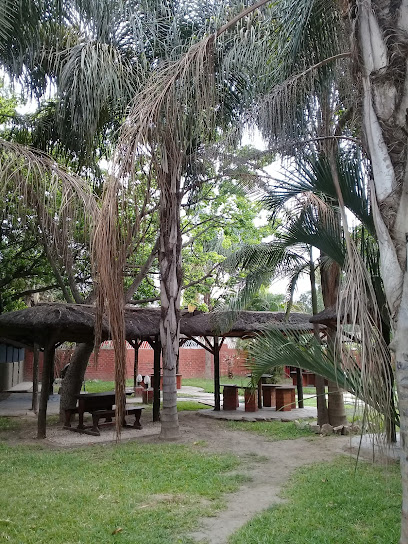
GRI - Wildlife Discovery Centre
Explore the GRI - Wildlife Discovery Centre in Lusaka National Park, where wildlife conservation meets educational adventure in Zambia's stunning natural environment.
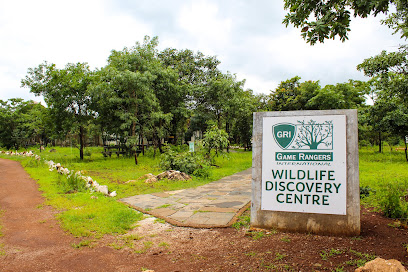
Kendal Park
Discover the beauty and tranquility of Kendal Park in Lusaka, a perfect retreat for nature lovers and those seeking relaxation amidst lush greenery.
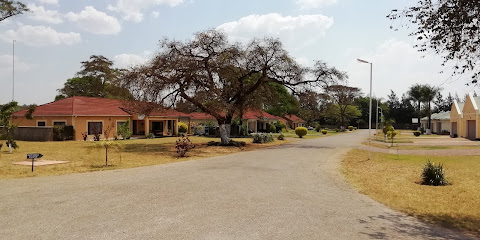
Louisa Gardens
Explore Louisa Gardens, a serene paradise in Lusaka filled with vibrant flora and tranquil pathways, perfect for relaxation and exploration.
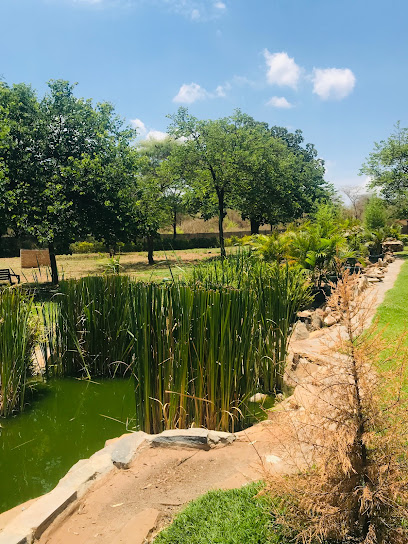
Kuka's Play Park
Experience the perfect family day out at Kuka's Play Park, where nature meets delicious barbecue and endless fun in Lilayi.
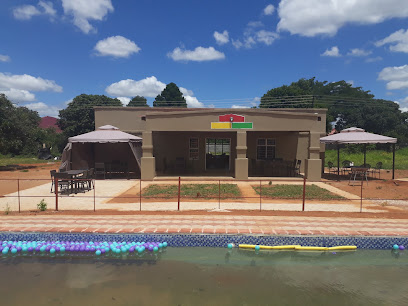
Leopards Hill Memorial Park
Visit Leopards Hill Memorial Park in Lusaka for a peaceful reflection on Zambia's history amidst beautiful landscapes and memorials.
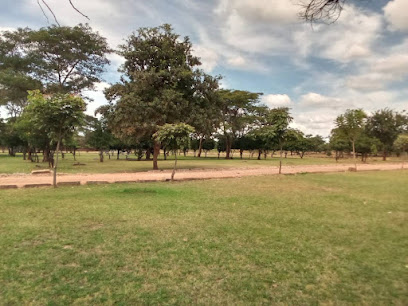
Buffaloes Park
Discover the serene landscapes and wildlife of Buffaloes Park in Lusaka, a perfect getaway for nature lovers and families seeking tranquility.
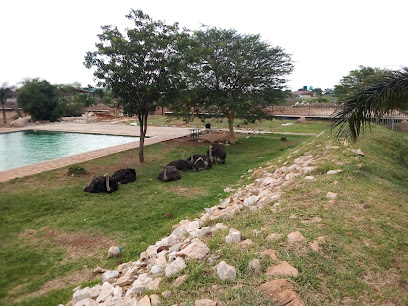
Cherise Kids Park
Experience family fun and nature at Cherise Kids Park, a vibrant oasis in Lusaka, perfect for children and parents alike.

Embassy Memorial Park
Discover the serene beauty and historical significance of Embassy Memorial Park in Lusaka, a perfect spot for relaxation and reflection amidst lush greenery.
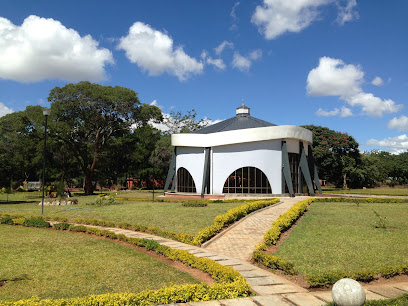
Blush Gardens
Discover the natural beauty of Blush Gardens, a serene garden oasis in Lusaka, perfect for relaxation, exploration, and appreciating nature's splendor.

THE GARDEN PARK
Experience the serene beauty of The Garden Park in Lusaka, a perfect escape for nature lovers and families alike.
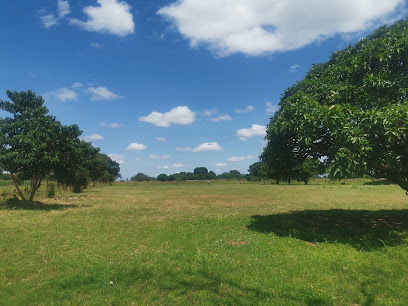
The Songiso's
Experience the serene beauty of The Songiso's Garden in Lusaka, a perfect escape for nature lovers and tranquility seekers.

TOUGHDOT EVENTS
Discover the scenic beauty and recreational charm of Toughdot Events, a serene park in Lusaka perfect for all visitors.
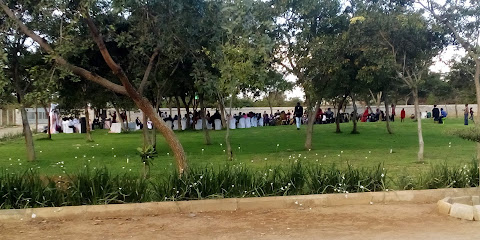
Essential places to dine
Taj Pamodzi | Lusaka
Discover unparalleled luxury at Taj Pamodzi in Lusaka - where modern elegance meets Zambian hospitality.
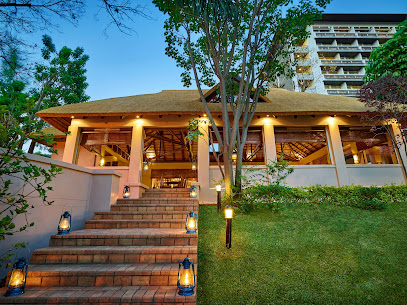
Radisson Blu Hotel, Lusaka
Discover unparalleled luxury at Radisson Blu Hotel in Lusaka – your gateway to Zambian culture and comfort.
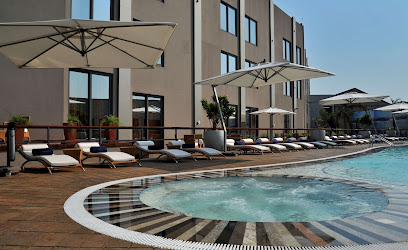
InterContinental Lusaka, an IHG Hotel
Discover unparalleled luxury at InterContinental Lusaka - your gateway to exquisite hospitality in Zambia's vibrant capital.
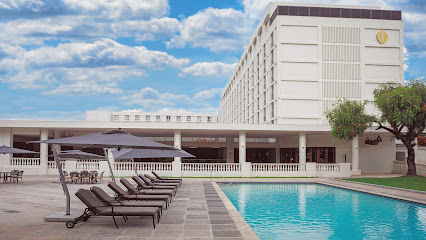
Neelkanth Sarovar Premiere
Discover unparalleled luxury at Neelkanth Sarovar Premiere in Lusaka – where comfort meets elegance for every traveler.

Hilton Garden Inn Lusaka Society Business Park
Experience modern comfort and exceptional hospitality at Hilton Garden Inn Lusaka Society Business Park - your perfect base in Zambia's capital.
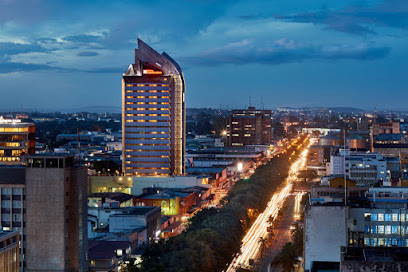
Keg and Lion
Experience the thrill of live sports at Keg and Lion in Lusaka – where great food meets vibrant atmosphere!
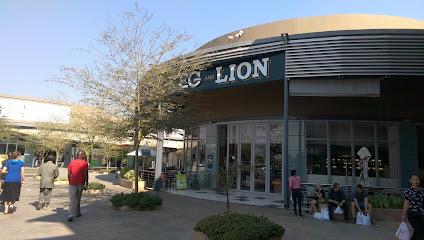
M’kango Golfview Hotel
Discover unparalleled comfort at M’kango Golfview Hotel in Lusaka – your gateway to luxury accommodations and vibrant local culture.
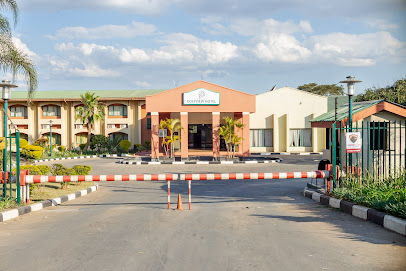
Protea Hotel Lusaka Tower
Discover luxury and comfort at Protea Hotel Lusaka Tower – your perfect base for exploring Zambia's vibrant capital.
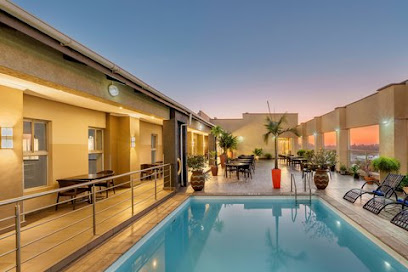
Protea Hotel Lusaka Cairo Road
Discover modern luxury and unmatched hospitality at Protea Hotel Lusaka Cairo Road - your perfect getaway in Zambia's vibrant capital.
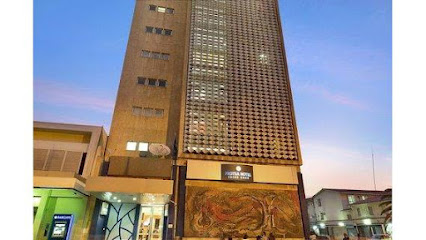
Copper Creek Spur
Experience authentic African flavors at Copper Creek Spur - Lusaka's premier steakhouse known for its delicious food and vibrant atmosphere.
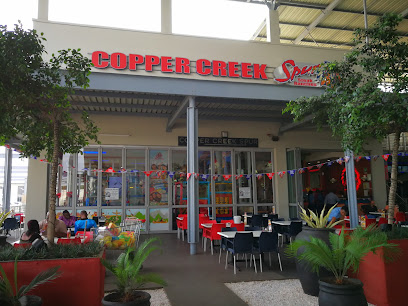
Best Western Plus Paramount Hotel
Discover modern luxury at Best Western Plus Paramount Hotel in Lusaka - your perfect base for exploring Zambia's vibrant capital city.

The Corner Cafe
Experience delicious meals and vibrant local culture at The Corner Cafe in Lusaka – your cozy retreat for memorable dining.
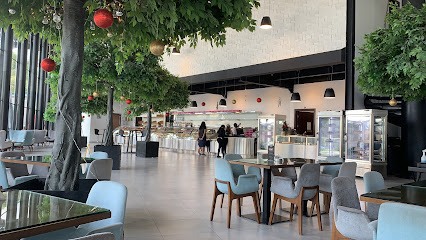
Prime Joint | EastPark Mall
Discover culinary delights at Prime Joint in EastPark Mall - where vibrant flavors meet warm hospitality in Lusaka.
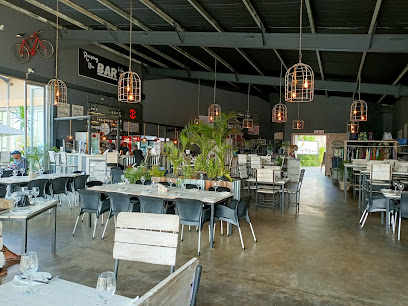
Sichuan Chinese Restaurant
Discover the bold flavors of Sichuan cuisine at Lusaka's premier Chinese restaurant, perfect for food lovers seeking authentic culinary experiences.
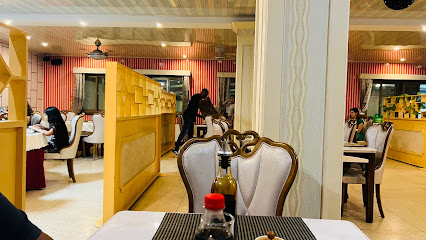
Holiday Inn Lusaka, an IHG Hotel
Discover unmatched comfort at Holiday Inn Lusaka - your gateway to Zambian hospitality in a vibrant city setting.
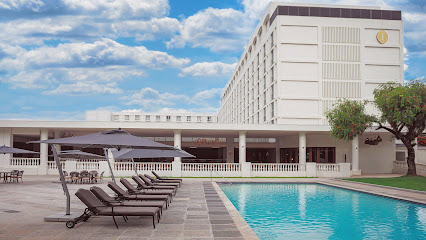
Markets, malls and hidden boutiques
Lewanika Mall
Discover the ultimate shopping and dining experience at Lewanika Mall in Lusaka, Zambia, where local charm meets global brands.
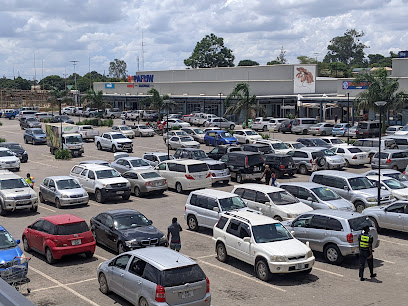
Leopards Hill Mall
Explore the vibrant shopping and dining scene at Leopards Hill Mall, Lusaka's premier destination for tourists and locals alike.
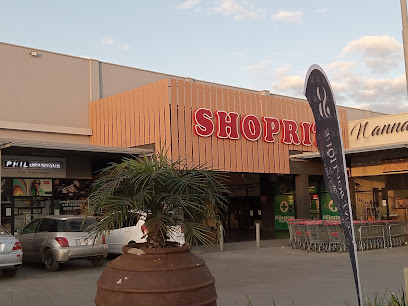
Mudpackers / LA Sports Zambia
Discover Mudpackers / LA Sports Zambia, your essential stop for outdoor gear and adventure equipment in Lusaka, Zambia.
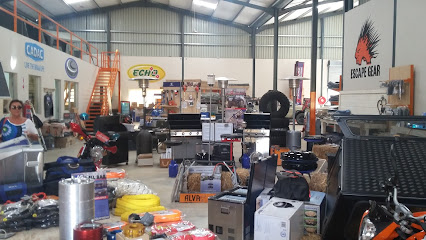
Lightfoot Zambia
Explore the rich heritage of Zambian craftsmanship at Lightfoot Zambia, your go-to destination for exquisite leather goods in Lusaka.
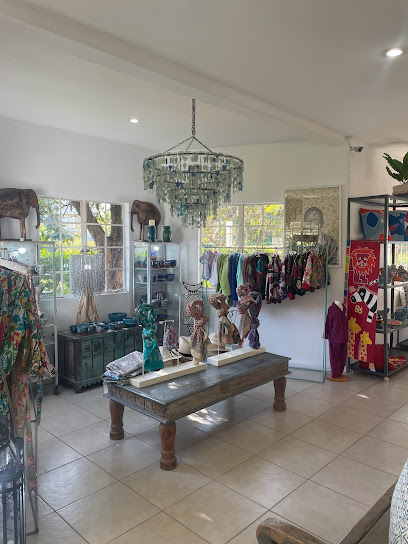
State Lodge Market
Explore the lively State Lodge Market in Lusaka, a vibrant shopping destination filled with local goods, authentic cuisine, and cultural experiences.
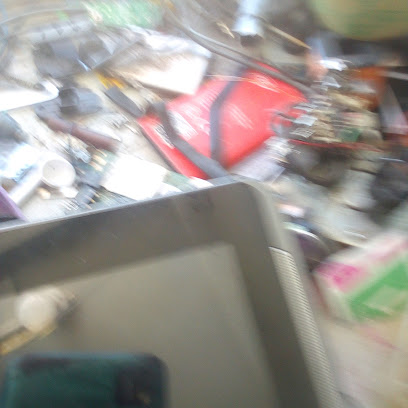
IL Mercato
Explore the vibrant IL Mercato in Lusaka, a treasure trove of Zambian art, fresh produce, and unique gifts that reflect the rich culture and creativity of the region.
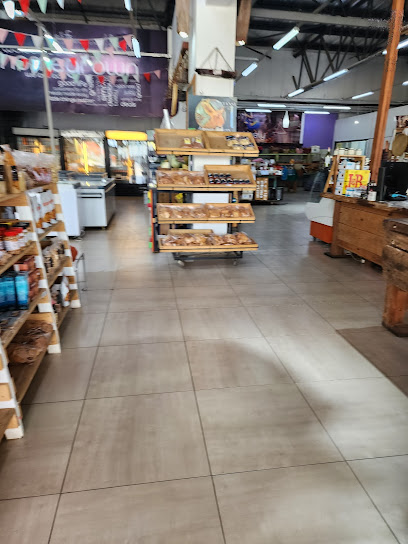
Team Five Gifts and Crafts
Explore the vibrant culture of Zambia through unique handicrafts, jewelry, and souvenirs at Team Five Gifts and Crafts in Lusaka.
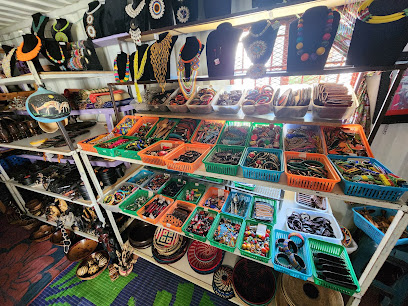
Mary's Bookshop
Explore Zambia's literary treasure at Mary's Bookshop, where stories unfold and culture thrives in the heart of Lusaka.
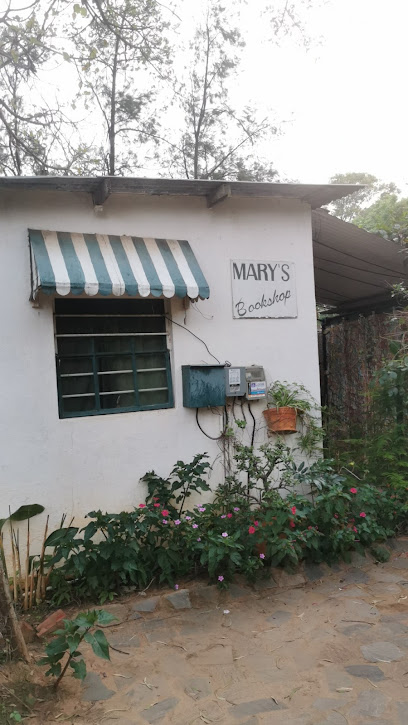
P Shop
Discover unique Zambian crafts and cultural treasures at P Shop, a vibrant store in the heart of Lusaka that celebrates local artistry.

Parkview Shop
Explore the vibrant flavors of Zambian cuisine at Parkview Shop, a must-visit grocery store in Lusaka for local produce and snacks.
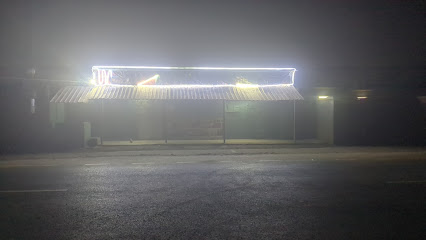
Home Essentials | Fan Hua
Explore Home Essentials | Fan Hua in Lusaka for a delightful array of home goods, local crafts, and unique gifts for every taste and budget.
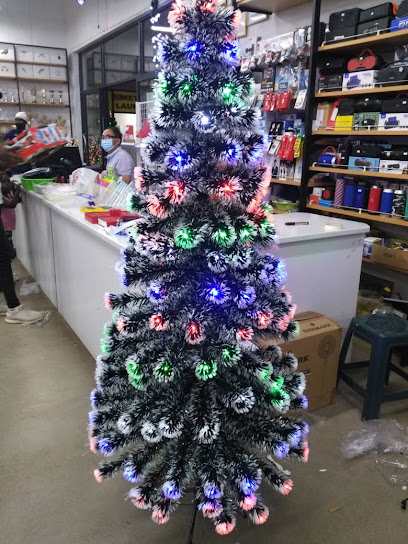
Scents of Lusaka
Discover the unique fragrances of Lusaka at Scents of Lusaka, where local artistry meets exquisite perfume selection.

Mj's Classic Collection
Explore Mj's Classic Collection in Lusaka for unique fashion and art pieces that embody the spirit of Zambia's vibrant culture and craftsmanship.

1of1 Sweetery&Gifts Shop
Explore the charming 1of1 Sweetery & Gifts Shop in Lusaka for delightful treats and unique gift baskets that capture the essence of Zambia.

Exotic Blac Store
Explore the vibrant styles at Exotic Blac Store in Lusaka, where fashion meets culture in a unique shopping experience.

Essential bars & hidden hideouts
The Orange Tree Public House
Explore the vibrant flavors of Lusaka at The Orange Tree Public House, a premier gastropub offering local and international cuisine in a lively atmosphere.
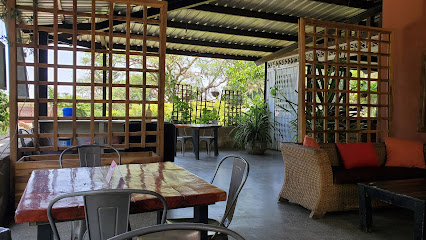
The Old Crow Pub
Experience the heart of Lusaka at The Old Crow Pub, where rustic charm meets vibrant social life, ideal for tourists looking for local flavor.
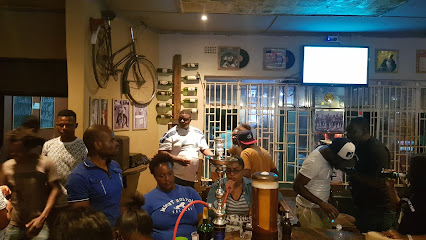
Chukams Pub And Grill
Experience Lusaka's nightlife at Chukams Pub And Grill, where local flavors and vibrant atmosphere combine for an unforgettable evening.
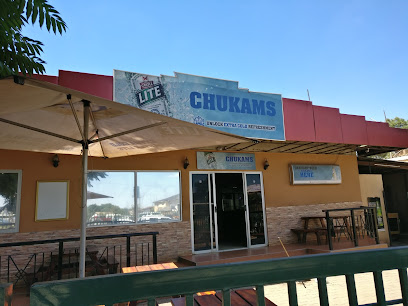
The Hangover Pub n Grill
Experience the vibrant nightlife at The Hangover Pub n Grill in Lusaka, where delicious food meets a lively bar atmosphere.
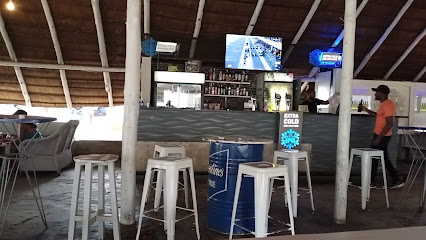
Champs VIP lounge
Experience Lusaka's nightlife at Champs VIP Lounge, where stylish ambiance meets a diverse drink menu in a lively atmosphere.
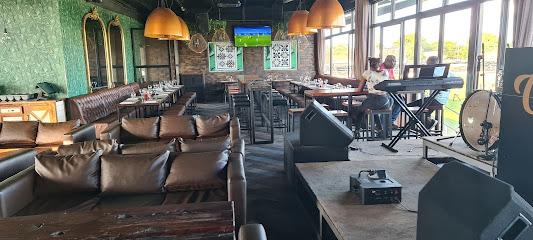
ChillSpot PUB N' Grill
Experience the vibrant nightlife at ChillSpot PUB N' Grill in Lusaka, where delicious grilled dishes and refreshing drinks await!

RAS Pub & Grill
Discover the lively atmosphere and local flavors at RAS Pub & Grill, a vibrant bar in Lusaka perfect for relaxation and entertainment.
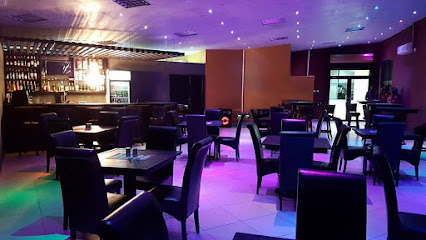
The Prime Pub & Grill
Experience the vibrant atmosphere and delicious grilled specialties at The Prime Pub & Grill in Lusaka, a must-visit for culinary enthusiasts.
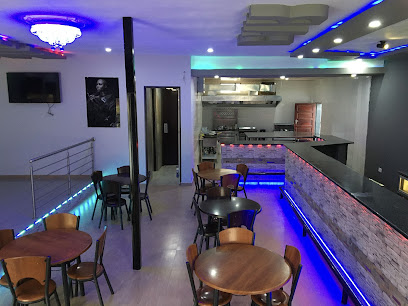
Boss Gardens Chesa Nyama
Experience the vibrant flavors of Zambia at Boss Gardens Chesa Nyama, a premier grill restaurant in Lusaka offering a feast of delicious grilled dishes.

Breezers Pub & Grill
Discover the lively Breezers Pub & Grill in Lusaka, Zambia, where great food, refreshing drinks, and a friendly atmosphere await you.
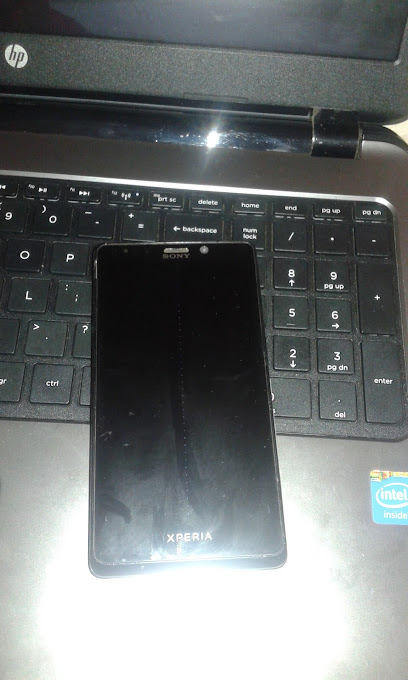
PUB N GRILL BY TUMTOWA
Savor the best of Zambian grilled cuisine at Pub N Grill by Tumtowa, where every bite is a celebration of flavor.
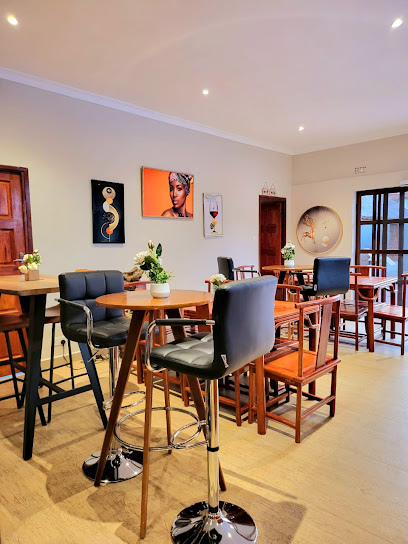
King's Pub
Discover the lively King's Pub in Lusaka, a perfect blend of local culture, great drinks, and a welcoming atmosphere for all visitors.

MJ Pub
Experience the vibrant culinary scene at MJ Pub in Lusaka, where delightful grilled dishes and a lively atmosphere await you.
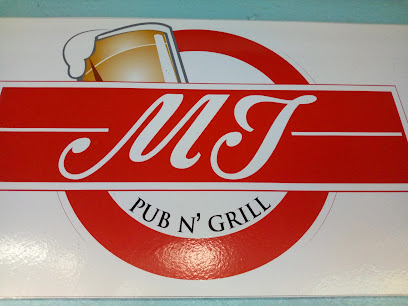
Dice The Hide Out
Experience the best of Zambian cuisine at Dice The Hide Out, a lively grill in Lusaka offering delectable dishes in a vibrant atmosphere.

Dandy Crazy PUB
Discover the lively Dandy Crazy PUB in Lusaka, where vibrant nightlife meets delicious local cuisine for an unforgettable experience.

Local Phrases about Lusaka National Park
-
- HelloMuli bwanji
[moo-lee bwan-jee] - GoodbyeMwapendwa
[mwa-pend-wa] - YesEe
[ay] - NoAwe
[ah-way] - Please/You're welcomeMwaimwenyo
[m-wai-mwen-yo] - Thank youZikomo
[zee-koh-moh] - Excuse me/SorryPepani
[peh-pah-nee] - How are you?Muli bwanji?
[moo-lee bwan-jee] - Fine. And you?Ndili bwino. Kaya inu?
[n-dee-lee bw-ee-no. ka-ya ee-noo] - Do you speak English?Mukufuna kuchita chizungu?
[moo-koo-foo-na koo-chee-ta chee-zoon-goo] - I don't understandSindifuna kudziwa
[sin-dee-foo-na koo-zee-wa]
- HelloMuli bwanji
-
- I'd like to see the menu, pleaseNdikufuna kuona menu, chonde
[n-dee-koo-foo-na koo-oh-na meh-noo, choon-deh] - I don't eat meatSindikudya nyama
[sin-dee-koo-dya nya-ma] - Cheers!Tikondane!
[tee-kon-da-neh] - I would like to pay, pleaseNdikufuna kulipila, chonde
[n-dee-koo-foo-na koo-lee-pee-la, choon-deh]
- I'd like to see the menu, pleaseNdikufuna kuona menu, chonde
-
- Help!Mulonga!
[moo-lon-ga] - Go away!Pita!
[pee-ta] - Call the Police!Pemphani amayenda!
[pehm-pah-nee ah-ma-yen-da] - Call a doctor!Pemphani dokotala!
[pehm-pah-nee doh-koh-ta-la] - I'm lostNdimakwala
[n-dee-ma-kwa-la] - I'm illNdimakwala
[n-dee-ma-kwa-la]
- Help!Mulonga!
-
- I'd like to buy...Ndikufuna kugula...
[n-dee-koo-foo-na koo-goo-la] - I'm just lookingNdimapeta
[n-dee-ma-peh-ta] - How much is it?Ndaliponse bwanji?
[n-da-lee-pon-se bwan-jee] - That's too expensiveIzi ndi zambiri
[ee-zee n-dee zam-bee-ree] - Can you lower the price?Mukufuna kuyiwonera mtengo?
[moo-koo-foo-na koo-yee-wo-neh-ra m-ten-go]
- I'd like to buy...Ndikufuna kugula...
-
- What time is it?Ndiye nthawi yayi?
[n-dee-yeh n-ta-wee ya-yee] - It's one o'clockNdiye saana
[n-dee-yeh sah-na] - Half past (10)Pakati pa (10)
[pah-ka-tee pah] - MorningMawa
[ma-wa] - AfternoonSana
[sa-na] - EveningUsiku
[oo-see-koo] - YesterdayChidzala
[chee-dza-la] - TodayLero
[leh-ro] - TomorrowNzao
[n-za-oh] - 1Moja
[mo-jah] - 2Ziwiri
[zee-wee-ree] - 3Tatu
[ta-too] - 4Nayi
[nai] - 5Sanu
[sa-noo] - 6Zidolo
[zee-do-lo] - 7Chindiri
[cheen-dee-ree] - 8Chizibwanji
[chee-zee-bwan-jee] - 9Chitsulo
[chee-tsoo-lo] - 10Pulogalamu
[poo-lo-ga-la-moo]
- What time is it?Ndiye nthawi yayi?
-
- Where's a/the...?Kuli...?
[koo-lee] - What's the address?Bwanji adilesi?
[bwan-jee ah-dee-leh-see] - Can you show me (on the map)?Mukufuna kundiwonetsa (pa mapu)?
[moo-koo-foo-na koon-dee-woh-neh-tsa pah mah-poo] - When's the next (bus)?Ndiye nthawi yayi (bas)?
[n-dee-yeh n-ta-wee ya-yee bas] - A ticket (to ....)Tikiti (ku ....)
[tee-kee-tee koo]
- Where's a/the...?Kuli...?
History of Lusaka National Park
-
Lusaka National Park was officially established in 2011, making it one of Zambia's newest national parks. Its creation aimed to provide a convenient wildlife escape for residents of Lusaka, the nation's capital, and promote conservation efforts in the region. The park spans approximately 6,715 hectares and features a mix of miombo woodland, grassland, and wetland ecosystems.
-
Following its establishment, Lusaka National Park became a focal point for wildlife reintroduction programs. Species that had become locally extinct, such as the white rhino, were successfully reintroduced to the park. These programs have played a critical role in preserving Zambia’s biodiversity and have attracted both local and international attention.
-
The land that now forms Lusaka National Park has long been inhabited by various indigenous communities, including the Soli people. These communities have a rich cultural heritage and a deep connection to the land. Traditional practices and knowledge about the local fauna and flora have been passed down through generations, contributing to the area's cultural landscape.
-
During the colonial era, the land that now constitutes Lusaka National Park was subject to various forms of exploitation, including logging and hunting. These activities led to significant ecological degradation. The establishment of the park in the post-independence era represents a shift towards conservation and sustainable use of natural resources.
-
Since its establishment, Lusaka National Park has been a model for community engagement and eco-tourism. Local communities are involved in park management and benefit from tourism-related activities. Eco-tourism initiatives aim to provide visitors with immersive experiences while promoting environmental stewardship and supporting local economies.
-
Lusaka National Park serves as a hub for various research and conservation projects. Scientists and conservationists conduct studies on native species, ecosystems, and the impacts of human activity on the environment. These efforts contribute to global understanding of conservation challenges and strategies, making the park an important site for scientific inquiry.
Lusaka National Park Essentials
-
Lusaka National Park is located just 15 kilometers south of Lusaka, the capital city of Zambia. The nearest airport is Kenneth Kaunda International Airport (LUN), about 30 kilometers from the park. From the airport, you can take a taxi or arrange for a shuttle service to the park. Alternatively, you can rent a car from various car rental services available at the airport. The journey by car typically takes around 45 minutes.
-
Once at Lusaka National Park, you can navigate the area by car, as it offers the most flexibility for exploring different sections of the park. Guided tours are also available and highly recommended for first-time visitors. These tours often include transportation within the park. Public transportation is not available within the park, so plan accordingly. If staying near the park, local taxis can be arranged for transport to and from your accommodation.
-
The official currency in Zambia is the Zambian Kwacha (ZMW). Credit cards are accepted at most hotels, restaurants, and larger shops in Lusaka, but it is advisable to carry cash, especially for entry fees and smaller vendors within and around the park. ATMs are available in Lusaka, but it's best to withdraw enough cash before heading to the park, as ATM services are not available within the park.
-
Lusaka National Park is generally safe for tourists. However, standard precautions should be taken. Avoid wandering alone at night and always stay within designated areas of the park. Lusaka itself has areas with higher crime rates, particularly in certain neighborhoods like Chibolya, which are best avoided. Always keep an eye on your belongings and be cautious when withdrawing cash from ATMs.
-
In case of an emergency, dial 999 for police, fire, or medical assistance. The nearest medical facilities are in Lusaka, so it is essential to have adequate travel insurance that covers medical emergencies. For minor health issues, there are pharmacies in Lusaka where you can purchase over-the-counter medications.
-
Fashion: Do dress comfortably and in light, breathable clothing suitable for the warm climate. Avoid wearing flashy jewelry. Religion: Do respect local customs and traditions, particularly if visiting any cultural sites. Public Transport: Do use registered taxis and avoid unlicensed operators. Don't eat or drink on public transport. Greetings: Do greet people with a handshake and a friendly smile. Eating & Drinking: Do try local Zambian dishes and be polite if offered food or drink by locals. Don't refuse hospitality abruptly, as it is considered impolite.
-
To experience Lusaka National Park like a local, consider visiting early in the morning when wildlife activity is at its peak. Pack a picnic and enjoy it at one of the designated picnic spots within the park. Engage with park rangers and guides, who can offer valuable insights into the park's flora and fauna. Don't miss the chance to visit the small but informative visitor center where you can learn about conservation efforts in the park.
Trending Landmarks in Lusaka National Park
-
Levy Junction Shopping Mall
-
Manda Hill Shopping Mall
-
Arcades Shopping Mall
-
Society Business Park
-
Woodlands Stadium
-
Lewanika Mall
-
Novare Great North Mall
-
Soweto Market
-
Hilton Garden Inn Lusaka Society Business Park
-
Longacres Mall
-
Munda Wanga Environmental Park
-
Twin Palms Mall
-
Ciêla, Lusaka, a Tribute Portfolio Resort and Spa
-
Official Kabwata Cultural Village Page
-
Kalimba Reptile Park
Nearby Cities to Lusaka National Park
-
Things To Do in Kariba
-
Things To Do in Kabwe
-
Things To Do in Chinhoyi
-
Things To Do in Ndola
-
Things To Do in Kitwe
-
Things To Do in Hwange
-
Things To Do in Livingstone
-
Things To Do in Harare
-
Things To Do in Victoria Falls
-
Things To Do in Kasane
-
Things To Do in Solwezi
-
Things To Do in Gweru
-
Things To Do in Katima Mulilo
-
Things To Do in Chipata
-
Things To Do in Nyanga







